Rich Snippets are more enticing to the user than a standard search result.
If you're yet to implement them, it's something I'd recommend considering. It won't take long to reap the benefits once you've made some adjustments!
I’ll be diving into what Rich Snippets are, their importance, and how you can build them into your strategy.
Rich Snippets are results Google (and other search engines like Bing) return that show enhanced information in addition to the standard title, URL, and meta description.
You would have seen them before; they look just like this:

Rich Snippets are often referred to as Rich Results and vice versa. The question is always popping up: “are they the same thing?”. The answer is, in a way, yes.
“Rich Snippets” was used to describe the simple enhanced SERP listing I’ve shown above.
Due to all the different enhanced results in the SERP, Google started calling any listing enhanced by structured data a Rich Result.

Google doesn’t use the “Rich Snippets” terminology throughout all their docs, however. It’s no wonder there is confusion regarding the terms.
SEOs still use the Rich Snippets terminology; often, I find when people refer to these, they’re talking about older, more simplified enhanced SERP listings.
Despite this, I’m going to define the two as the same thing, as that is what Google implies.
Rich Snippets help you mainly through an increased CTR because they provide more information and make your SERP listing stand out.
Rich Snippets themselves don’t improve your rankings if you get them. However, the structured data you add to your website to make it eligible for a Rich Snippet can help improve them.
There's no generic ranking boost for SD usage. That's the same as far as I remember. However, SD can make it easier to understand what the page is about, which can make it easier to show where it's relevant (improves targeting, maybe ranking for the right terms). (not new, imo)
— 🍌 John 🍌 (@JohnMu) April 2, 2018
The purpose of structured data is to help Google better understand your content, so the potential ranking benefit makes sense!
Rich Snippets won’t appear for every search. I’ve compiled a list of where I’ve found they most commonly appear, what they look like, and the benefits they offer.
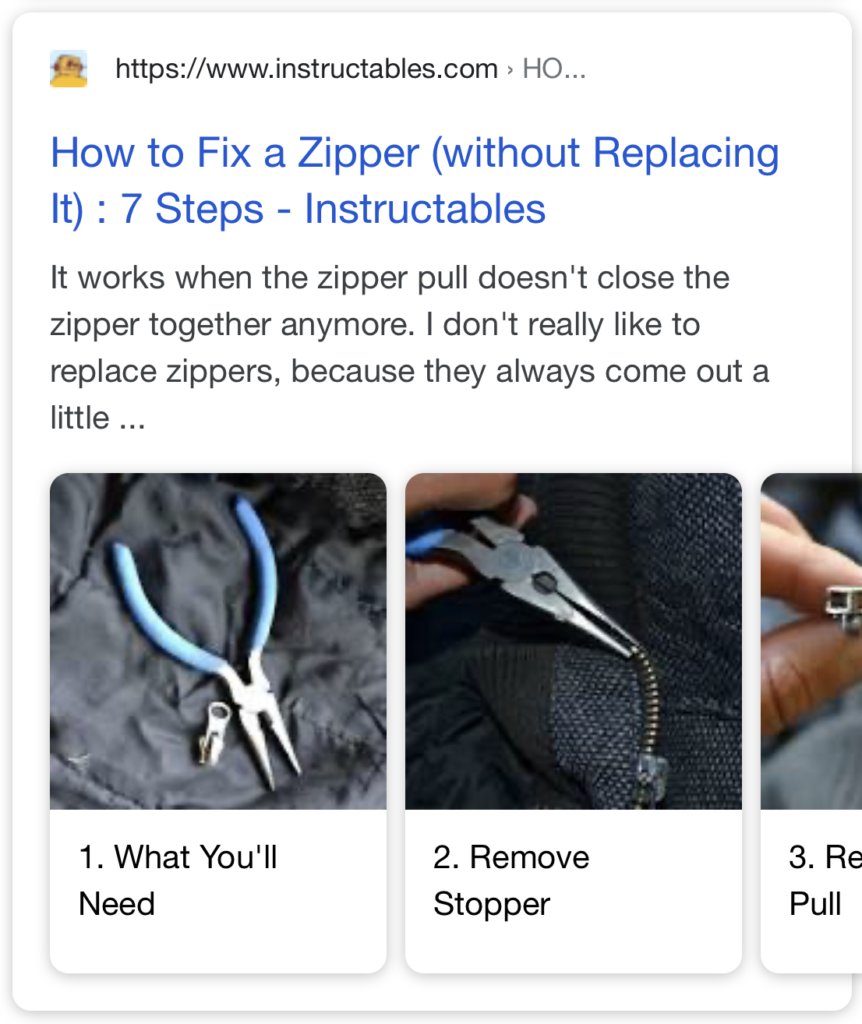
These are efficient for someone looking for a quick guide on how to do something.
Information appears in step-by-step order, often accompanied by imagery.
Some SEO’s have reported how-to results can cause a drop in organic traffic as users get the answer in the SERP, so make sure to test for your website.
The unintended consequence of adding FAQ schema. It looks so pretty in the SERP... but where did all our traffic go? 🙄#seo #structureddata #schema #google pic.twitter.com/yy93nGo6m8
— Lily Ray 😏 (@lilyraynyc) June 13, 2019
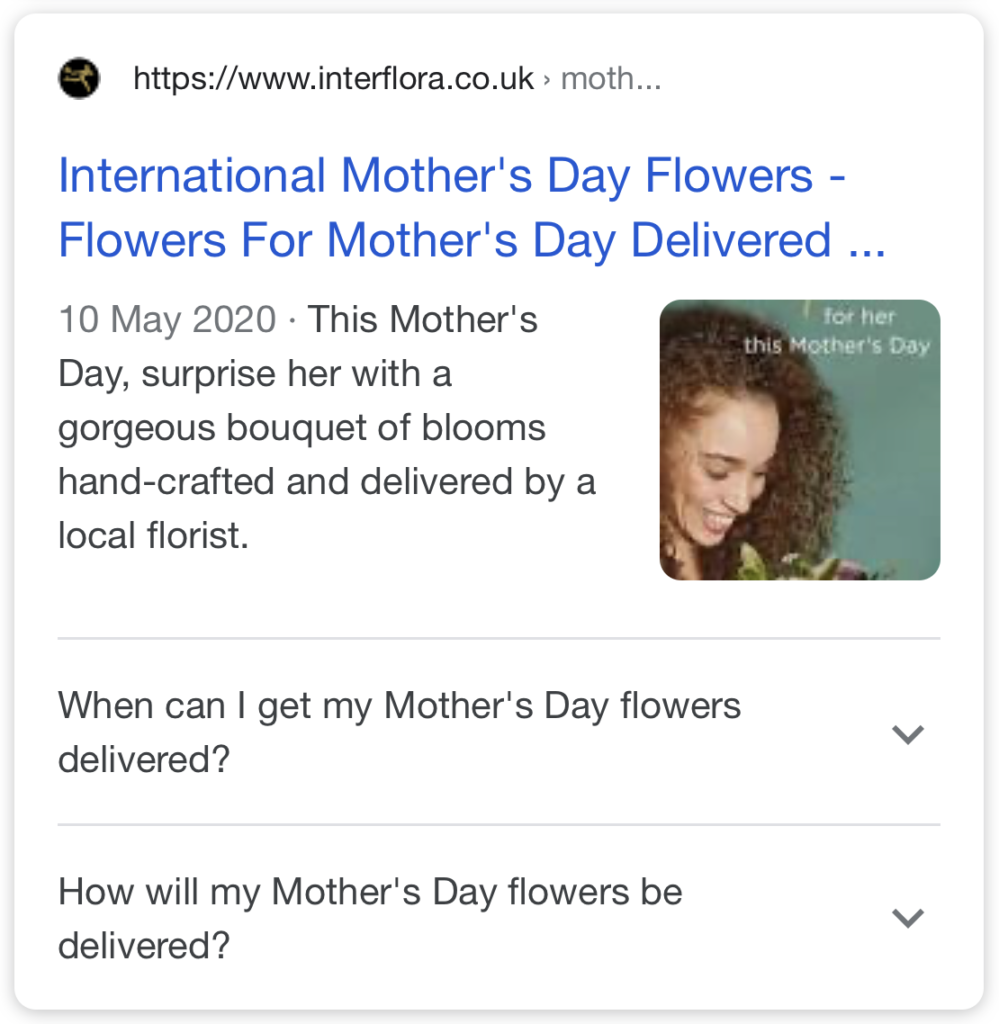
A question or a list of items will appear below the snippet, increasing the size of your snippet for a potential CTR boost.
When you click each question, it’ll expand to reveal the answer.
From my experience, FAQ Rich Results can appear on most search results. But make sure to keep it relevant and replicate content that can also be found on the page.

These sometimes show as a carousel and the user doesn’t have to specify video in their search. In the example above, the user wanted information on how to build a chair. Google has decided a video guide would better benefit the user.
You don’t necessarily have to post a video on YouTube to show on these, just make sure you have the appropriate structured data.
If you create a lot of video content, this Rich Result can make your website stand out and increase your coverage in the SERPs.
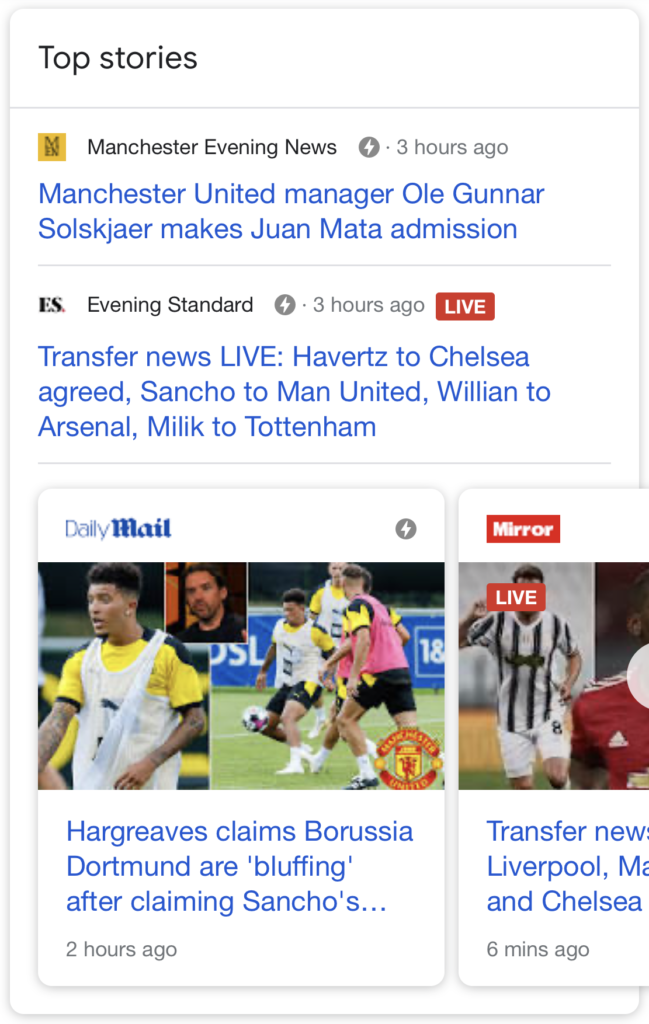
News websites most often use these, and stories appear as a carousel. The content shown changes regularly to keep up to date with new stories coming out.
The benefit of these is evident for news websites; you get a prime spot in the SERP that can also be more visually appealing.
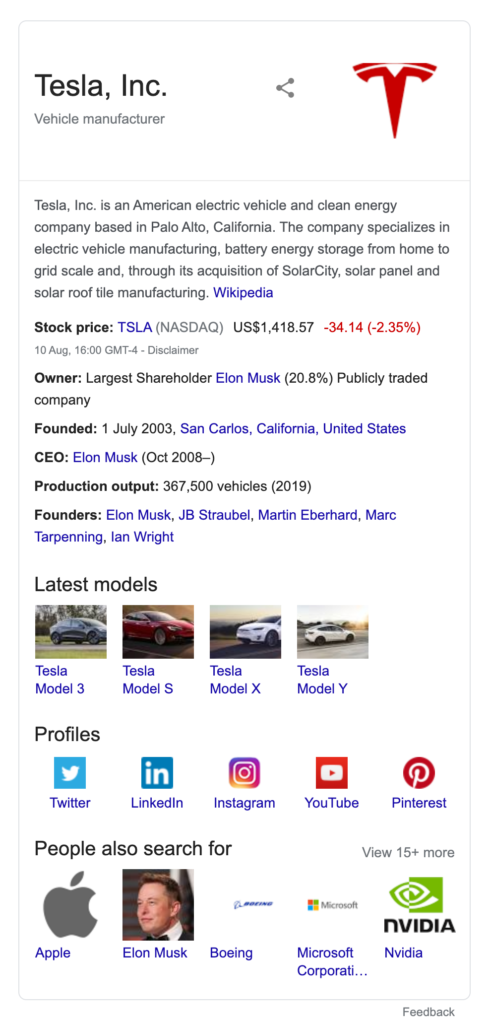
While this is debatable as to whether we could call this a rich snippet or a SERP feature, it is impacted by structured data so worth including.
Knowledge panels appear on the right side and feature business information, including company type, CEO name, stock information, and company profile links.
Some of this comes from third-party resources, such as Wikipedia, but Google also collects information from your structured data and shows it in the panel.
Google stores all the data it can find about a company in its knowledge graph; once they are confident enough in the data, they’ll show a panel.
So while you are increasing the chances of getting this panel with structured data, it isn’t guaranteed.
There are benefits here for both users and companies with certain information displayed, such as quick links to social profiles and blurb about the company straight from the SERP.
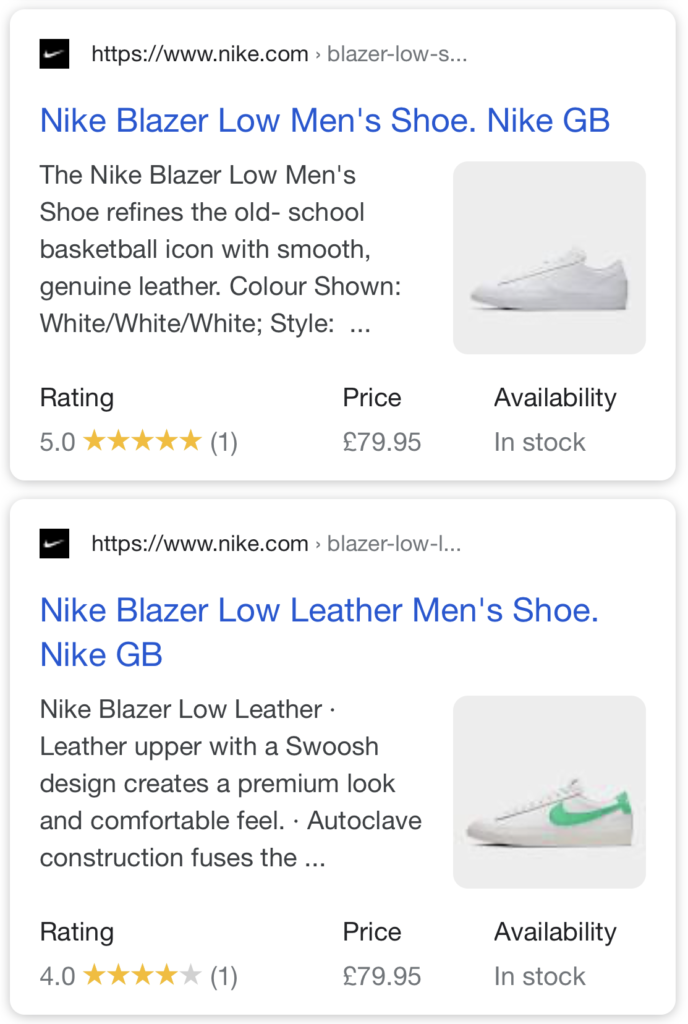
These Rich Snippets allow a website to include reviews, availability, product pricing, and product imagery.
Implementing structured data for products also creates an enhanced listing in Google images. Consistently getting an improved listing isn’t guaranteed, although it is likely if the structured data is correct.
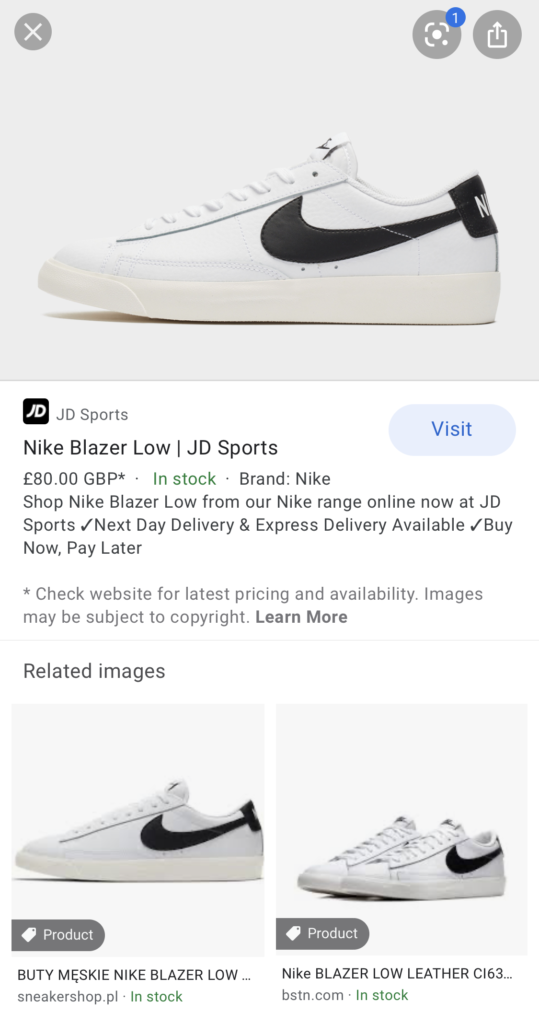
This additional information is a great way to gain an advantage over competing websites by making your listing in search results more appealing.
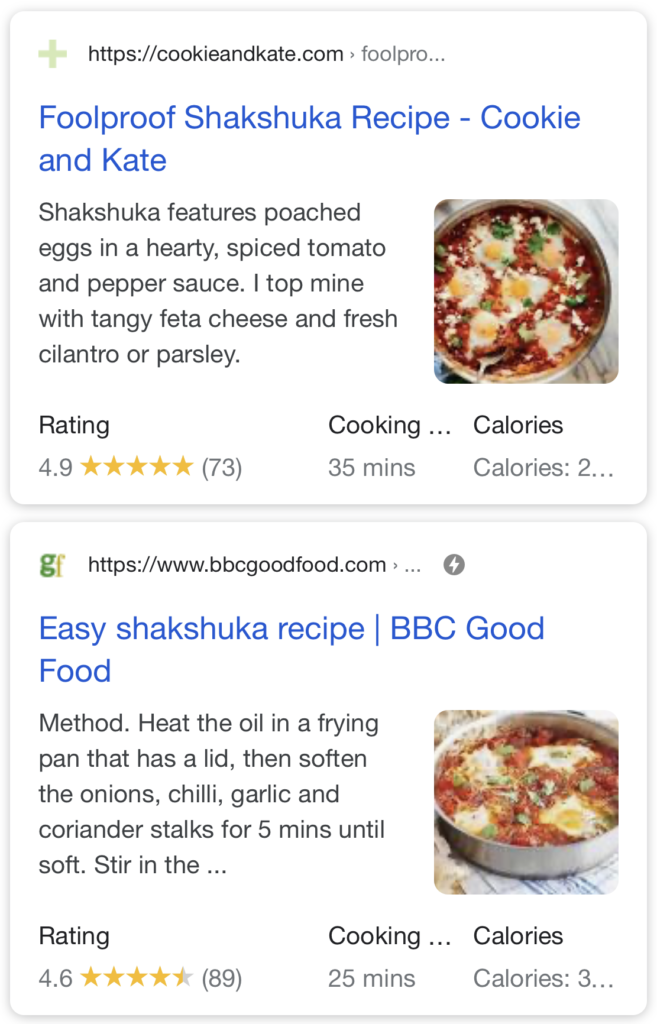
The benefit of recipe Rich Snippets is the searcher can often see recipe ratings, calories, cooking time, and more, all within the SERP.
This information helps users, as they can see whether the recipe is worth trying before they even reach the website.
While this may decrease visitors, it could increase the quality of your visitors. Maybe they stay longer on the site, sign up for a newsletter, or don’t bounce immediately.
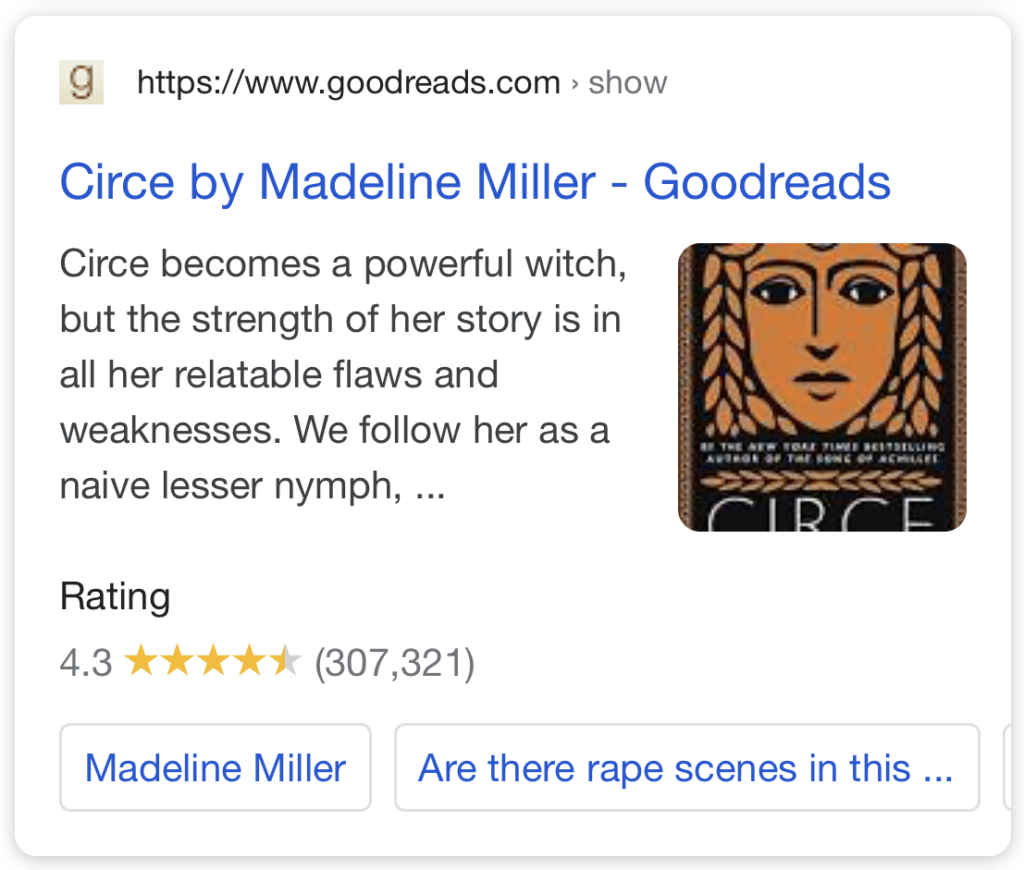
Rich Snippets for reviews are one of the most common enhancements you’ll come across. They typically include star ratings and the number of reviews received.
The benefits of this are obvious; high ratings will massively impact your CTR, especially for more generic searches.
When you know how to recognize a Rich Snippet, you’ll probably be surprised at how often they show up when you search for something on Google.
So, how do you get a Rich Snippet? Two words: structured data.
You have a higher chance of showing with a Rich Snippet if you add structured data to your website. Structured data is essentially “organized” data — and is a term not exclusive to the SEO world.
An example of unstructured data would be Google trying to figure out if something is an address from the text on a page.

With structured data, the information would be explicitly listed in the page’s source code, in addition to being displayed as shown above for the reader.
<script type="application/ld+json">
{
"@context": "http://schema.org",
"@type": "Organization",
"name": "Advanced Web Ranking",
"description": "World’s longest standing rank tracking tool - Advanced Web Ranking",
"logo": "https://www.advancedwebranking.com/assets/img/press/logo-colored.svg",
"address": {
"@type": "PostalAddress",
"addressCountry": "addressCountry",
"addressLocality": "Craiova",
"addressRegion": "DJ",
"postalCode": "200413",
"streetAddress": "8 Sfantu Dumitru Street, 2nd Floor"
},
"email": "mailto:help@advancedwebranking.com",
"telephone": "+1 650 963 5582",
"url": "https://www.advancedwebranking.com/",
"sameAs": [
"https://twitter.com/awebranking",
"https://www.facebook.com/AdvancedWebRanking",
"https://www.linkedin.com/company/advanced-web-ranking/",
"https://www.youtube.com/user/advancedwebranking"
]
}
</script>As you can see, structured data specifies which bits of information are what, making it much easier for a computer to understand.
The first thing to know is that “Schema” is the language of structured data.
Schema is essentially a vocabulary all search engines understand.
Fortunately, you don’t have to have any coding experience to implement structured data to your website, thanks to all the tools and example code snippets available.
There are a few different ways to implement it, but my preference is JSON-LD to add structured data to your website - and Google also recommends it.
JSON-LD allows you to neatly organize all your structured data in one place, the <head> of the page.
<script type="application/ld+json">
{
"@context": "https://schema.org/",
"@type": "Restaurant",
"name": "Trattoria Luigi",
"image": [
"https://example.com/photos/1x1/photo.jpg",
"https://example.com/photos/4x3/photo.jpg",
"https://example.com/photos/16x9/photo.jpg"
],
"priceRange": "$$$",
"servesCuisine": "Italian",
"address": {
"@type": "PostalAddress",
"streetAddress": "148 W 51st St",
"addressLocality": "New York",
"addressRegion": "NY",
"postalCode": "10019",
"addressCountry": "US"
}
}
</script>This makes JSON-LD better than other forms of structured data such as Microdata. Microdata is dispersed throughout the <body> of the page, making the structured data less organized and harder to read.
<div itemscope itemtype="http://schema.org/PostalAddress">
<span itemprop="name">Jeff’s House Clearance</span><br>
<span itemprop="streetAddress">197 Nene Terrace Road</span><br>
<span itemprop="addressLocality">Peterborough</span>,
<span itemprop="addressRegion">Lincolnshire</span>
<span itemprop="postalCode">PE6 0LD</span><br>
<span itemprop="addressCountry">United Kingdom</span>
</div>The best resource for finding JSON-LD examples is by first heading to Google’s search gallery and looking at all the different Rich Results you can acquire.
Google Tag Manager (GTM) is another option allowing you to implement JSON-LD structured data in just a few simple steps.
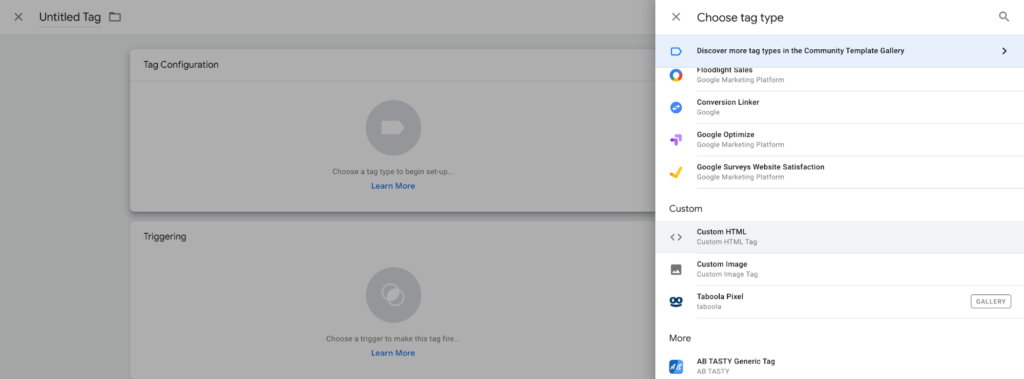
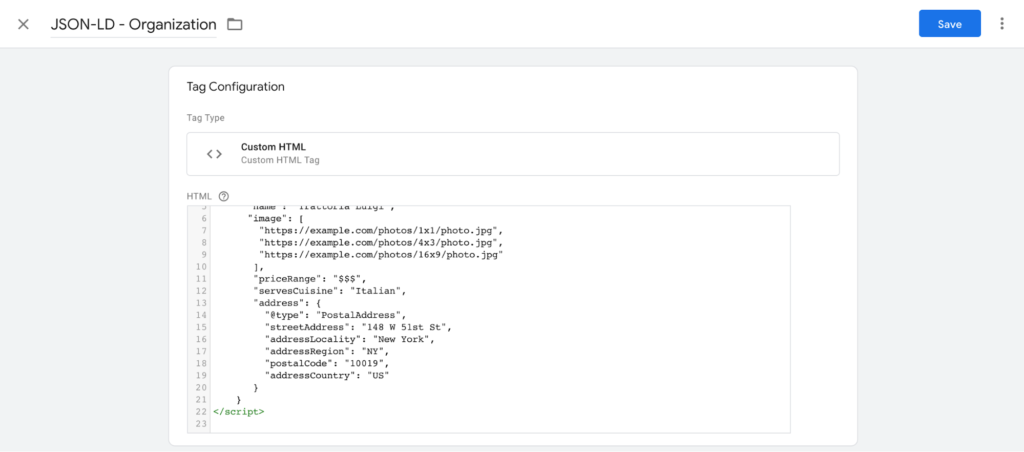
Did you know that thanks to GTM variables, you can dynamically generate structured data based upon what is found on the page?
When implementing structured data through Google Tag Manager, try to use variables wherever possible. It helps prevent mismatches between structured data and what is found on the page.
A third option is to use plugins like Rank Math for WordPress.
Rank Math makes it easy to optimize for Rich Snippets by including Rich Snippet blocks within the Gutenberg editor.
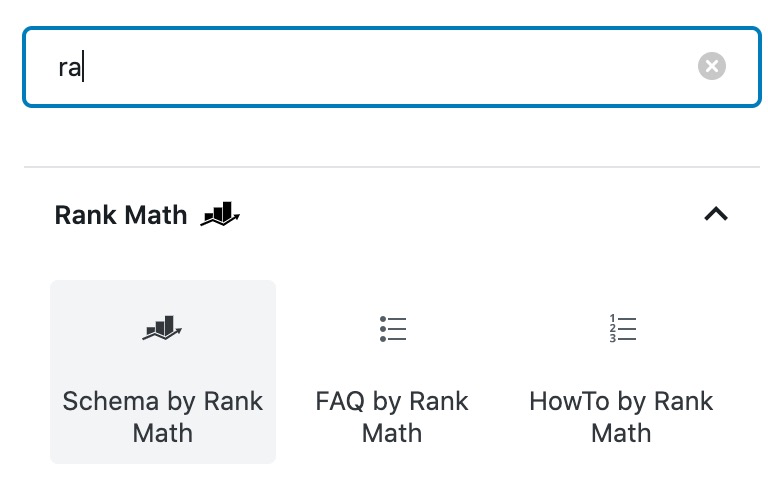
You can see there are some examples of Rich Snippets that we covered earlier on.
You simply choose the option you intend to use and then fill in the information.

It’s a straightforward way to do it if you’re using WordPress!
Rank Math also allows you to add structured data at the document level rather than as a block.
You can set the type of structured data for it to output at the post type level within the “Titles & Meta” settings.
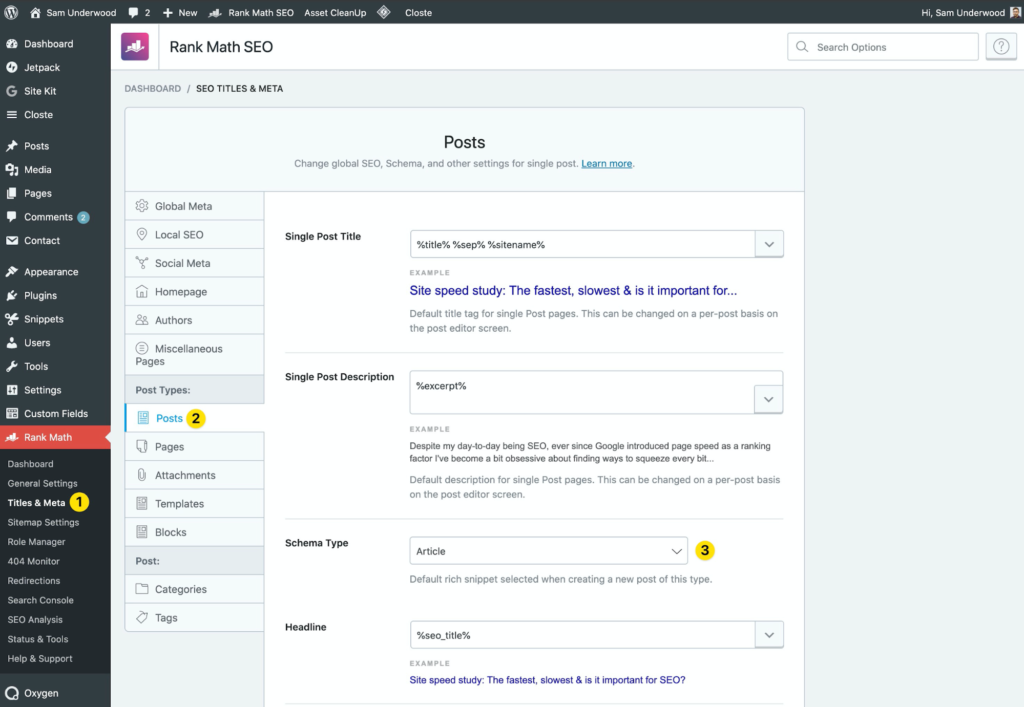
If you want to edit the schema type for an individual page/post, you can head to the Rank Math settings within the editor.
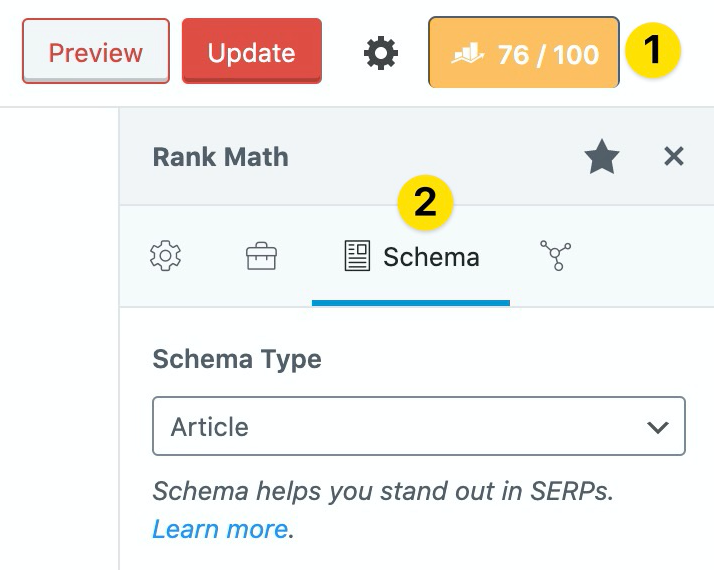
Once you’ve incorporated structured data, I’d recommend using Google’s Rich Results testing tool. It takes just a few moments and will reveal whether Rich Snippets are live and working for your website.
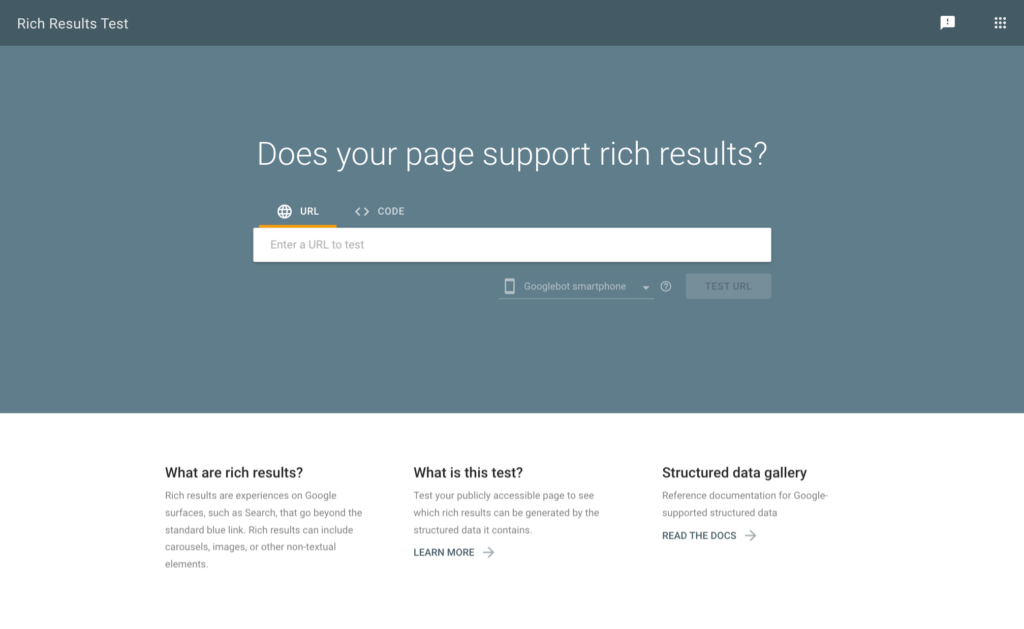
Be aware, just because structured data validates does not mean you will get a rich result. John Mueller recently had this to say as to why they may not show.
3 possible reasons: technically incorrect (use SDTT), not compliant w/ policies (eg, wrong markup type), or general quality issue with site
— 🍌 John 🍌 (@JohnMu) August 11, 2017
You can also use Google Search Console to find this out using their enhancement reports. These will automatically show as soon as you start adding snippets to your website, and Google has seen them.
Not only does it highlight any errors, but it also provides a walkthrough of how you can fix them.
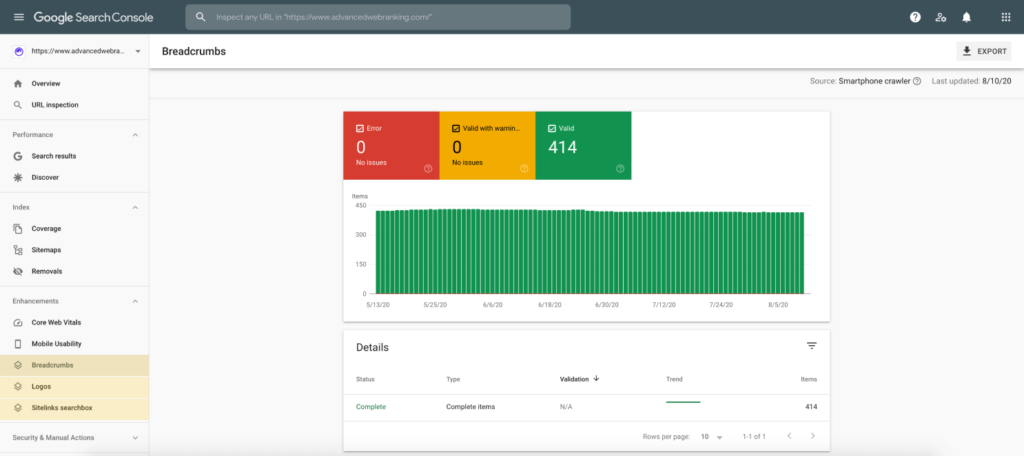
There’s often a correlation between Rich Snippets and increased CTR, so you’re likely interested in their impact.
To do this, I’d recommend monitoring performance through Google Search Console.
In the search results section, filter for search appearance.
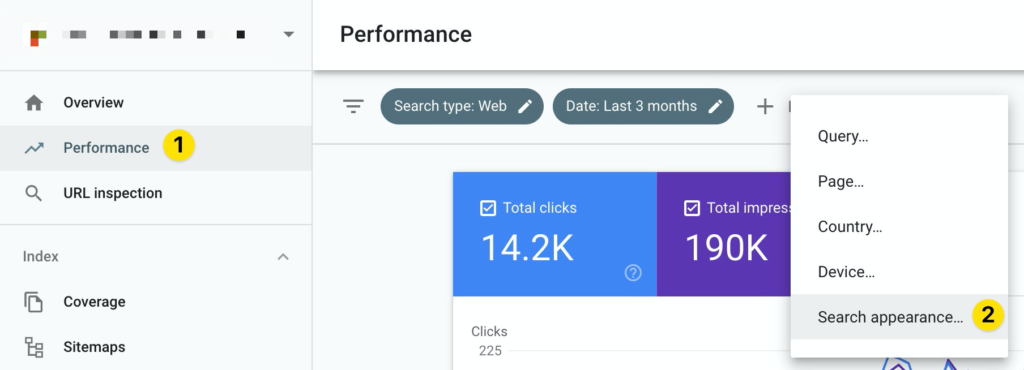
Then select the type of result.
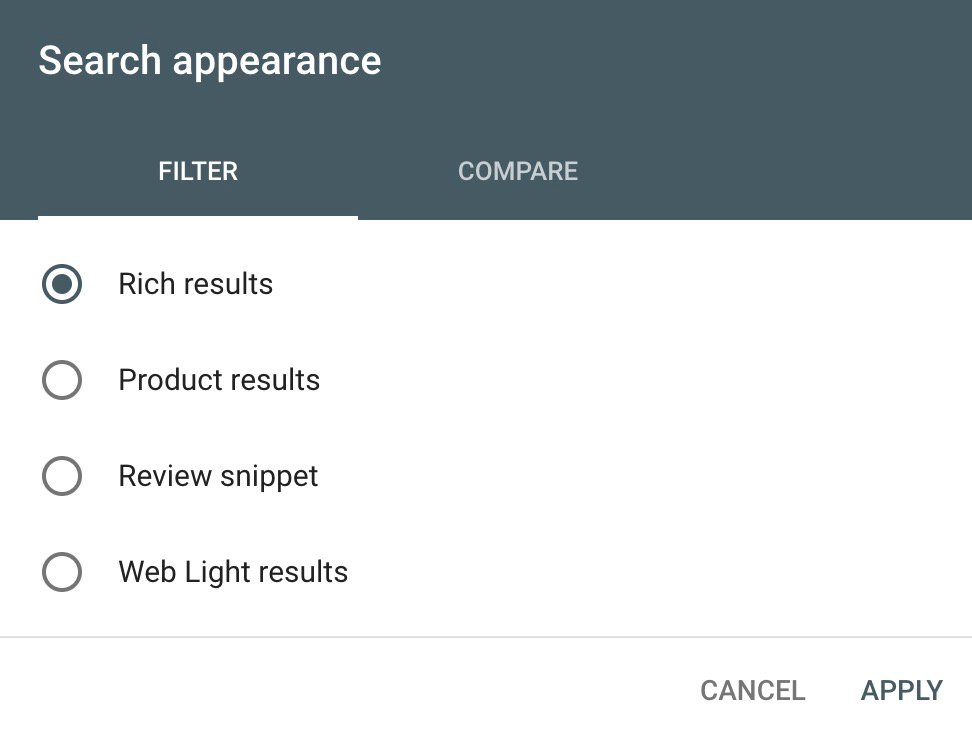
By checking this report, you can quickly compare the result to your typical CTR to see if performance improves when you add snippets.
In addition to that, you can use Advanced Web Ranking to monitor the performance of Rich Snippets for your website, as well as your competitors’ websites.
You can use the “SERP Features” filter in multiple Advanced Web Ranking reports or the “SERP Features” report to track most of the Rich Snippets mentioned above:
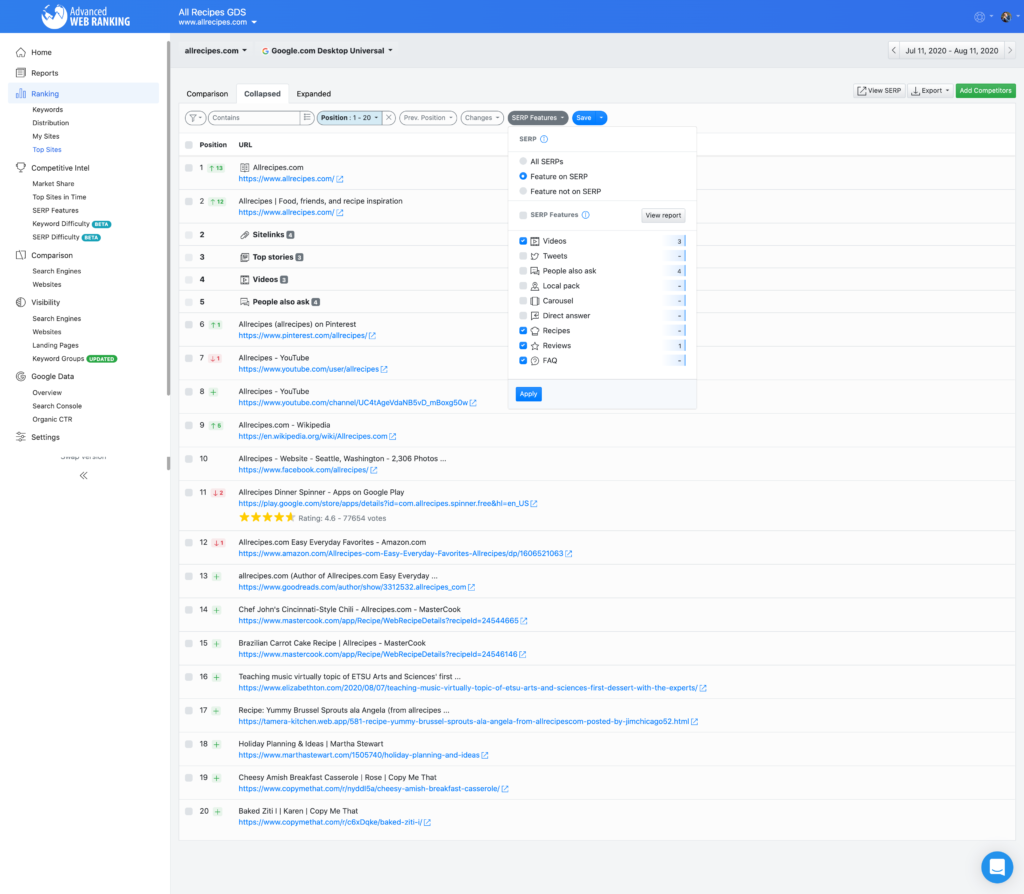
Plus, these are all types of search results that you can track with Advanced Web Ranking. We keep an up-to-date list of SERP features if you want to see more.
All in all, Rich Snippets are a great way to make a regular search result look much more appealing and attract more clicks.